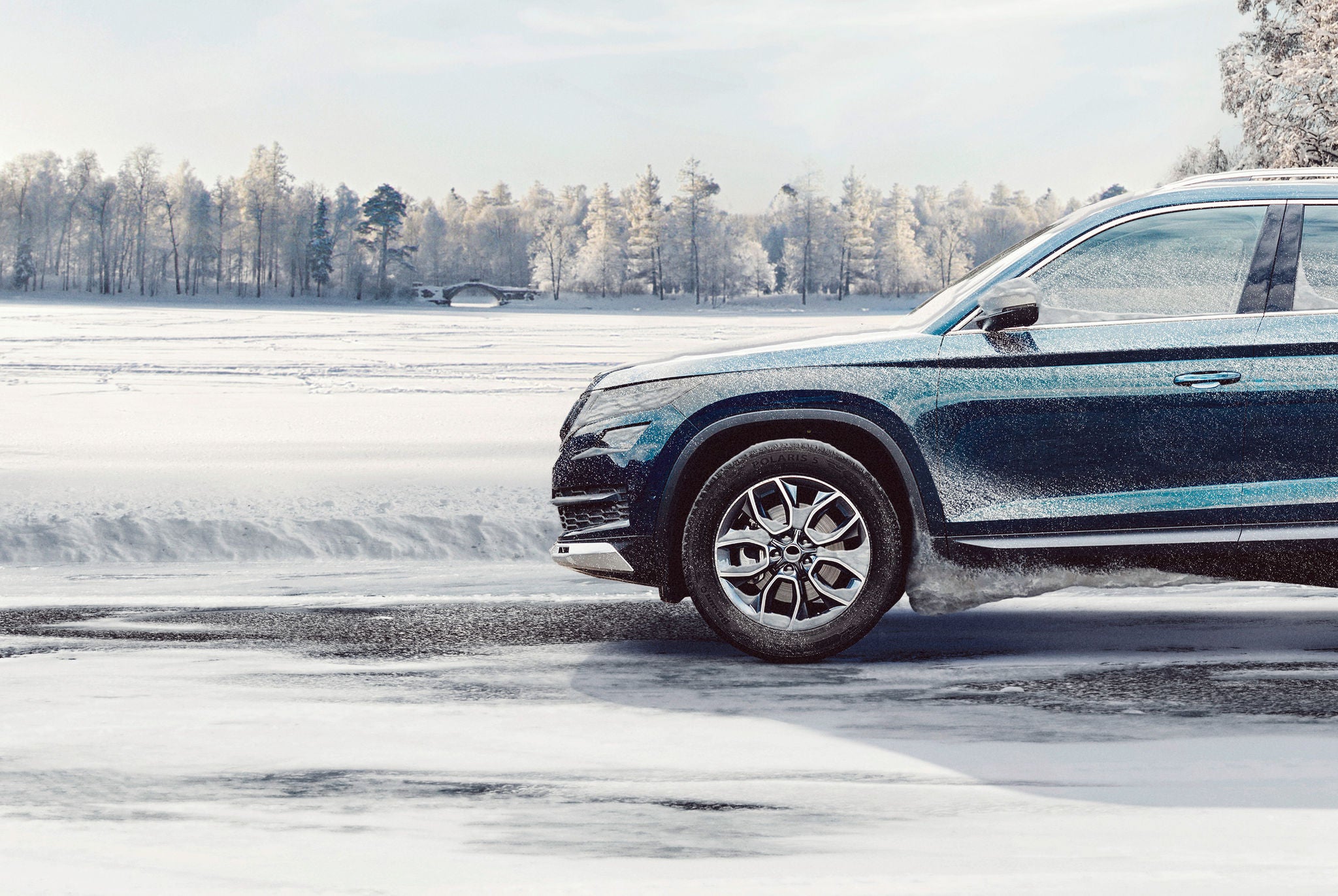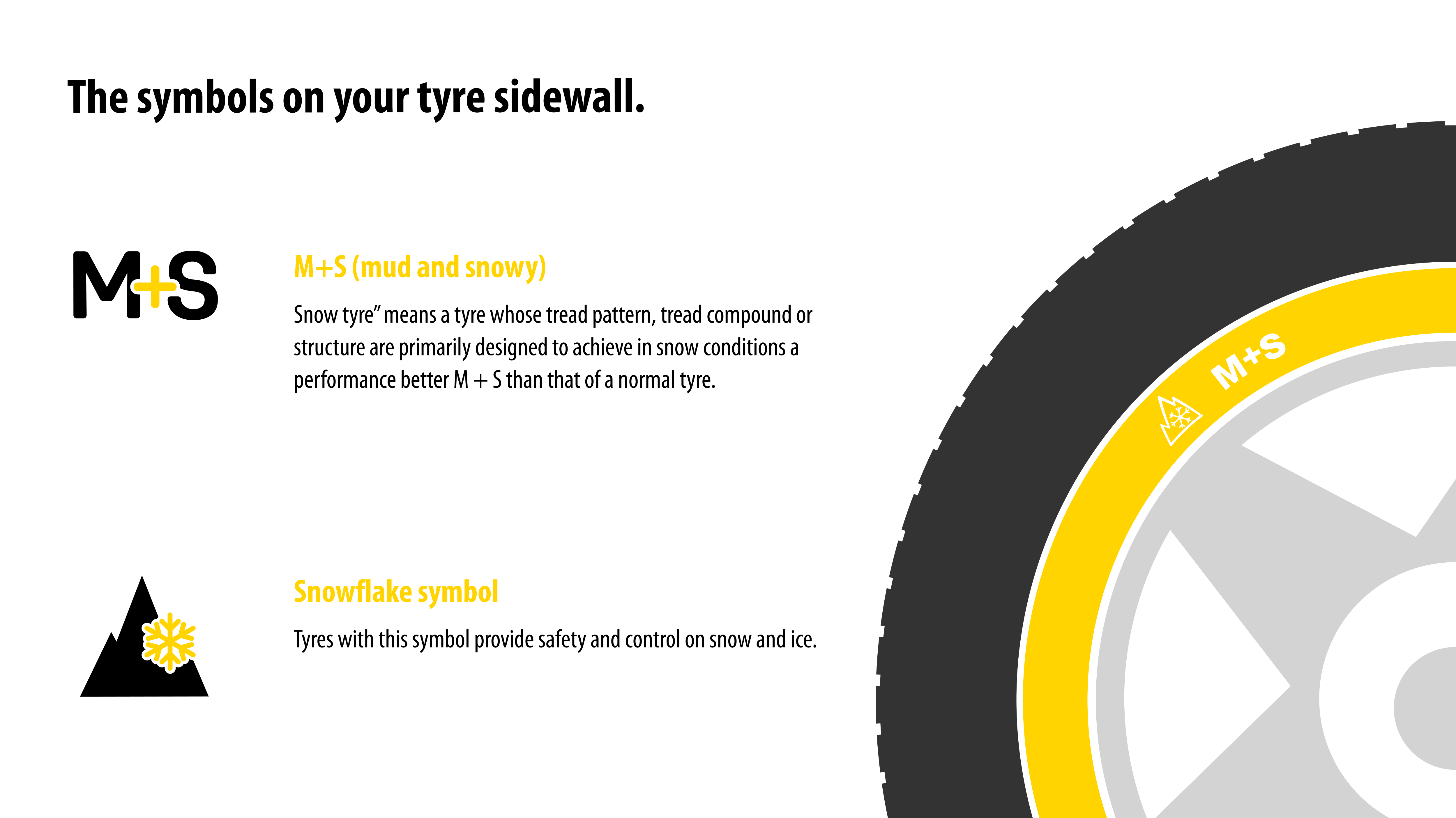
Snow and ice can come as a surprise. Winter tyres are now the be-all and end-all for a skid-free and safe journey. There is no specified date for fitting winter tires. This is dependent on weather conditions, which can last for longer or shorter periods of time from one year to the next. If you want to be on the safe side, you can follow the tried and tested "O-to-E" rule (October to Easter).

EU laws and legislation Winter 2024/2025
The winter tyres regulations differ throughout Europe. What applies in Austria is not the same as in Belgium or France. Sometimes winter tyres are mandatory and sometimes they are only recommended.
| Country | Winter regulations |
| Austria | Winter regulations |
| Belgium | Winter regulations |
| Bosnia-Herzegovina | Winter regulations |
| Belarus | Winter regulations |
| Bulgaria | Winter regulations |
| Croatia | Winter regulations |
| Czech Republic | Winter regulations |
| Denmark | Winter regulations |
| Estonia | Winter regulations |
| Finland | Winter regulations |
| France | Winter regulations |
| Germany | Winter regulations |
| Hungary | Winter regulations |
| Ireland | Winter regulations |
| Italy | Winter regulations |
| Kosovo | Winter regulations |
| Latvia | Winter regulations |
| Liechtenstein | Winter regulations |
| Lithuania | Winter regulations |
| Luxembourg | Winter regulations |
| North Macedonia | Winter regulations |
| Montenegro | Winter regulations |
| Netherlands | Winter regulations |
| Norway | Winter regulations |
| Poland | Winter regulations |
| Portugal | Winter regulations |
| Romania | Winter regulations |
| Serbia | Winter regulations |
| Slovakia | Winter regulations |
| Slovenia | Winter regulations |
| Spain | Winter regulations |
| Sweden | Winter regulations |
| Switzerland | Winter regulations |
| Türkiye | Winter regulations |
| Ukraine | Winter regulations |
| United Kingdom | Winter regulations |
Despite careful research, we cannot guarantee that the information is correct and complete.
Tyres marked with M+S (Mud+Snow) provide a tread pattern or structure that is designed to deliver performance that exceeds that of a standard tyre in snowy conditions. The M+S label is not subject to a defined test procedure.
Three-Peak Mountain Snowflake (3PMSF) tyres deliver winter performance that is legally certified. These tyres have to pass a test on a snow-covered road and have at least 25% better traction than a standard reference tyre.
Winter tyres from Continental are marked with the snowflake symbol on the tyre wall. Not only do Continental winter tyres easily outperform M+S tyres, they also significantly exceed the requirements of the “Three-Peak Mountain Snowflake“ symbol (3PMSF). The development of winter tyres from Continental is based on many years of experience and practical knowledge gained from using the tyres in the low temperatures found in Scandinavian countries. These special winter tyres offer a distinct advantage for a safe journey on snow-covered or icy roads.
Registering tyre approval
What you should pay attention to: If you want to change your tyres, you must have the tyre approval in the vehicle documents changed. An approved test centre will make the following changes to your documents.
In some cases, the test centre might also require confirmation from the vehicle manufacturer of the ABS/ASR suitability* of the tyre/wheel combination.

Our Expert's Advice:

You can recognize winter tires by special markings on the sidewall. In the past, the well-known M+S mark was sufficient as a winter tire label.
The Alpine symbol (3PMSF*) is mandatory for winter or all-weather tires produced since January 1, 2018.
At what temperature do winter tyres become sensible?
We recommend fitting your winter tyres when the temperature drops and stays steady below seven degrees Celsius. Whether you change your tyres in accordance with the "O-to-E" rule or in October or December depends on the weather conditions. Until when can you drive with winter tyres? Change your tyres a little later in the year if the temperatures in spring are still below seven degrees Celsius. The opposite applies for mild temperatures in autumn or winter.
There is no obligation to fit summer tyres. In principle, you can drive on winter tyres all year round without a problem. But does it make sense to go without changing the tyres?
Is using winter tyres in summer sensible?
Driving with winter tyres in the summer is allowed, but it is not advisable. We strongly recommend that you change your tyres twice a year, even without a law in place. Why?
Winter and summer tyres are designed differently. Summer tyres are harder and have a special tread pattern that reduces the risk of aquaplaning. Conversely, winter tyres have a softer rubber compound that is optimally adapted for the cold season. This is especially noticeable when braking. The pronounced tread pattern ensures good traction in snow, black ice and slush, unlike in summer. The different tyre design also has an effect in other areas. Winter tyres offer the best performance with regard to fuel consumption and driving comfort only at the appropriate time of year.
What makes winter tyres efficient at low temperatures?
Winter tyres are specially designed to deliver full driving performance in cold temperatures. Their rubber compound has a greater proportion of natural rubber. They remain flexible even below seven degrees Celsius and they have a better grip on the road. The grooves and ribs on the tyre tread are deeper than those of summer tyres. This ensures good driving on snow. How are these properties affected by higher temperatures? They are less efficient. Winter tyres have a higher rolling resistance in warm weather and a significantly longer braking distance. That means at temperatures above 15 degrees Celsius, your car will come to a standstill up to seven metres further on than with summer tyres. Therefore, winter tyres should only be used in the appropriate weather conditions.
Our conclusion: Change your tyres to match the weather conditions. This will save energy and fuel and ensure greater driving safety. Always keep the winter tyres law in mind in cold temperatures. When you should change to winter tyres depends on the country and the region.
Which vehicles are exempt from the winter tyre requirement?
Some vehicles are exempt from the winter tyre requirement in snow and ice conditions. This includes:
- Commercial vehicles used in agriculture and forestry
- Single-track motor vehicles such as motorcycles, mopeds or bicycles
- Forklifts suitable for picking up, lifting, moving and positioning loads
- Emergency vehicles from the police, federal armed services or fire service and the disaster control department
- Special vehicles for which there are no Class C1, C2 or C3 tyres. (cars, camper vans, buses)
Our Expert's Advice:

Tyre Class C1 is for cars, C2 for light commercial vehicles and C3 for heavy commercial vehicles.

